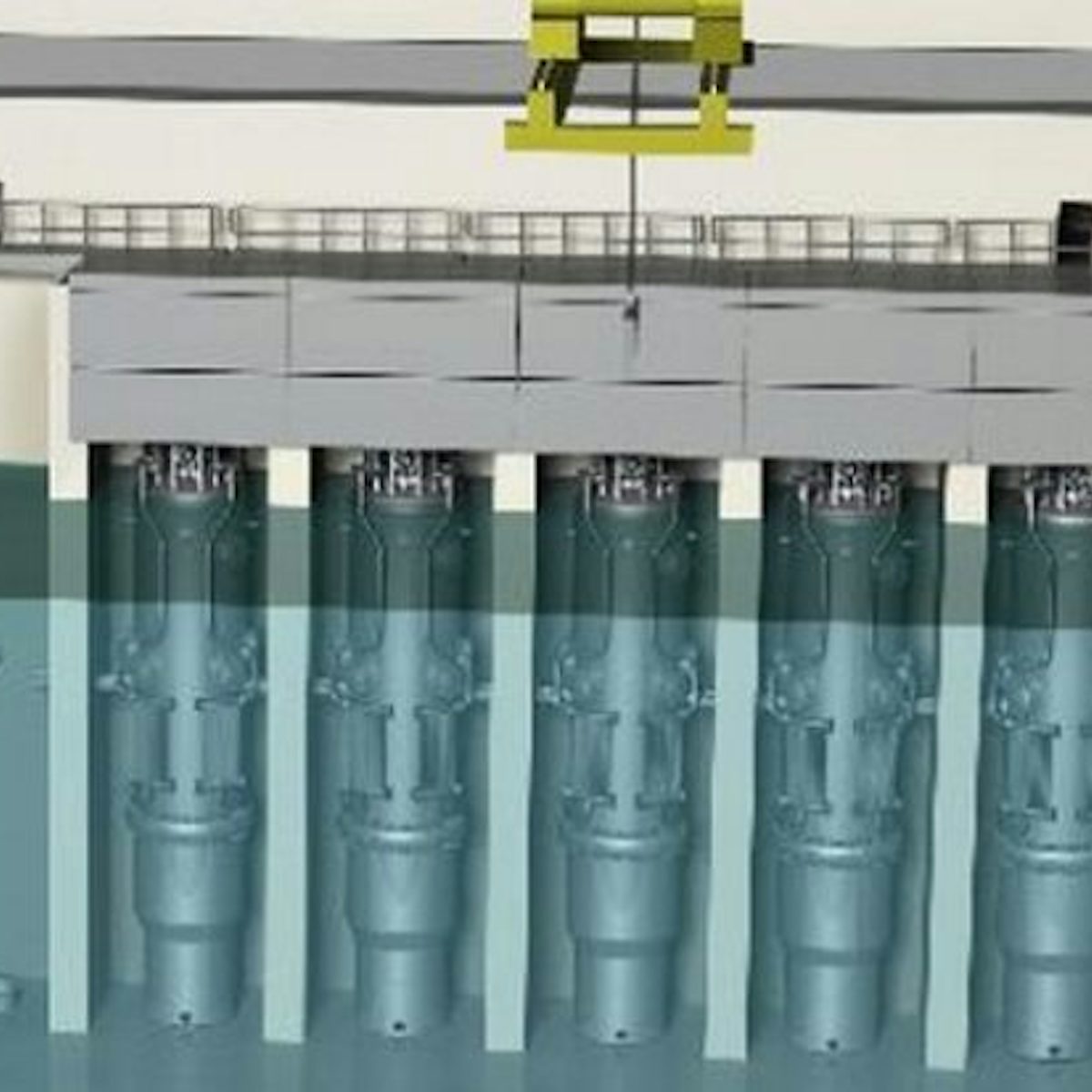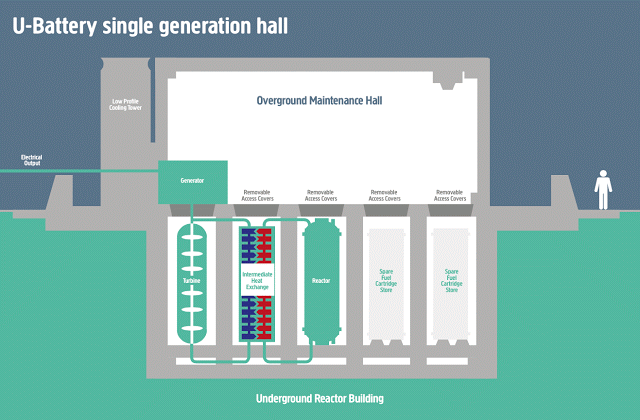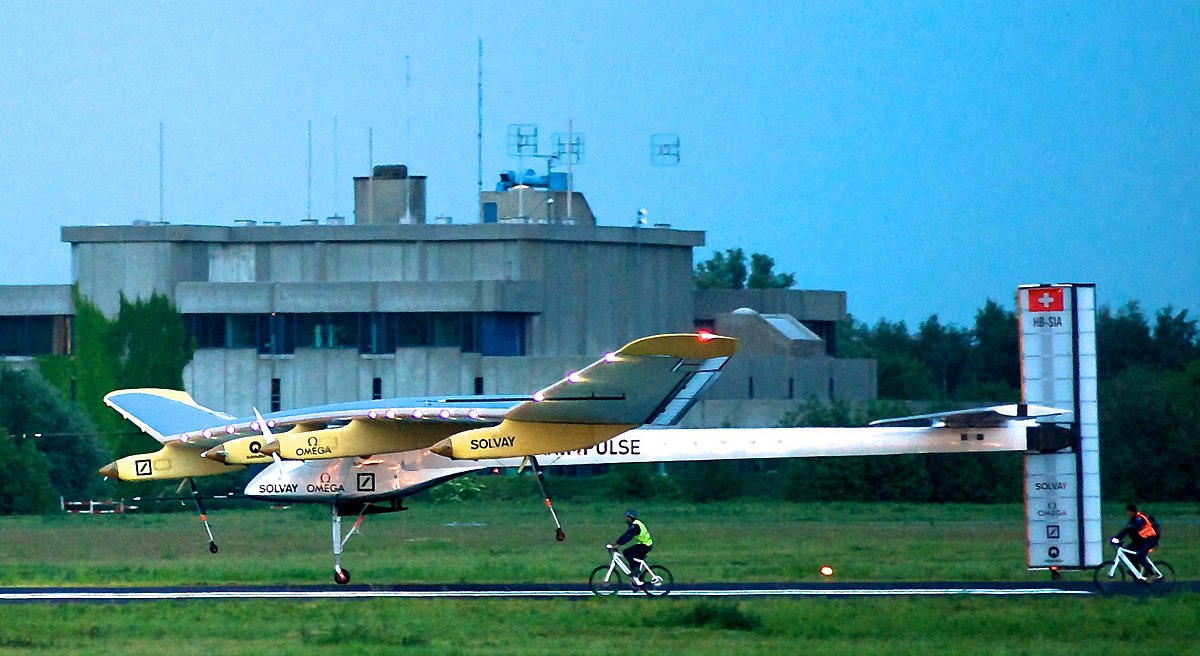Technology evolution has been phenomenal in the current decade & continues to be. Am optimistic that thoughts expressed in words will find its way into action and form in the near future by some brilliant mind.I can send a message to the other side of the world on a device that sits on my pocket. 50 years ago that was firmly in the realms of science fiction.
I drove home this afternoon in my very own car where I hit speeds of 100km/h, unthinkable 150 years ago.
I'm about to turn on a light in the room I'm in that's a little dark without looking for a candle first.
One of my favorite sayings is "nothing is impossible, we just haven't found a way to do it all yet".
You are using an out of date browser. It may not display this or other websites correctly.
You should upgrade or use an alternative browser.
You should upgrade or use an alternative browser.
Worlds first all electric plane takes off.
- Thread starter kelvedon
- Start date
- Status
- Not open for further replies.
Stating that "physics states we can't" is rather short sighted IMHO. There is so much about the physical universe, from the very tiny to the very big that we don't understand, or that our understanding is flawed. In science nothing is absolute.
We will no doubt continue to make discoveries, things that were once thought of as impossible will continue to become common place. Nothing states that battery technology won't be among those discoveries, and given the amount of research (and financial investments) which is currently going into battery technology there is certainly a chance we'll find gains to be had.
It's just reality to state that you can't develop technology to change an atom, in the same way you can go from 50 nm to 35 nm sized computer etchings. There are physical limitations to batteries and current batteries cannot improve significantly.
There has been a lot of innovation over the last 15 years, just to get from the NiCad 30Wh/kg technology that we had then to the Lithium Ion chemistries we have today offering up to 260Wh/kg. There are cathode compounds with 6 times the current energy density and anode compounds (silicone, lithium) with over 10x the current energy densities offered by graphite, not to mention methods of assembling them into batteries which are more efficient than the approaches of today.
We are at the cray supercomputer end of the battery innovation scale today. The point about the CPU advances per Moore's Law is that they have reached physical limitations and the market demands efficiency and not transistor count or clock cycles today. Battery improvements are being driven by the ubiquity of portable devices since the release of the iphone. People forget that 15 years ago it was absolutely not common for us to travel around with portable computers running constantly. Back in 2004, laptops looked like this:
TechnologyGuide
Thank you for visiting the TechnologyGuide network. Unfortunately, these forums are no longer active. We extend a heartfelt thank you to the entire community for their steadfast support—it is really [...]www.notebookreview.com
Have a look at what they used to measure the dimensions of this thing. This was not the era of high density battery technology. When the iphone was released in 2007, it had a 1400 mAh lithium battery and was 11.6mm deep. The latest iphone 11 has a 3110 mAh battery and is 8.3mm deep. These are both Li-Ion batteries. Calling this peak battery is a bit premature I think.
You're talking about changing materials not improving the current batteries. Where was the improvement in NiCad technology? There wasn't they moved to Lithium.
I also note the weigh of the iphone has increased significant, almost double in some models. Rather than thickness the more interesting question would be sizes of the internal components. Surely you're not going to tell me the size of the battery in both iphones is the same. Weight increase, computer circuits smaller - where has the fat been added, to the battery?
Then there is the situation with these batteries catching on fire...
harvyk
Senior Member
- Joined
- Apr 15, 2009
- Posts
- 7,013
- Qantas
- Gold
It's just reality to state that you can't develop technology to change an atom, in the same way you can go from 50 nm to 35 nm sized computer etchings. There are physical limitations to batteries and current batteries cannot improve significantly.
You're talking about changing materials not improving the current batteries. Where was the improvement in NiCad technology? There wasn't they moved to Lithium.
I also note the weigh of the iphone has increased significant, almost double in some models. Rather than thickness the more interesting question would be sizes of the internal components. Surely you're not going to tell me the size of the battery in both iphones is the same. Weight increase, computer circuits smaller - where has the fat been added, to the battery?
Then there is the situation with these batteries catching on fire...
So what make you so certain that we've reached the absolute limits of battery technology, that we're extracting 100% of value out of every single atom stored in a battery, and that even if we have exhausted our limits of what an atom can hold with our current technology that there is not a formula for a better more efficient way of harnessing the power?
I mean just look at how much energy is wasted via waste heat rather than as electricity. You can't tell me that finding a more efficient way of extracting electricity without also generating waste heat isn't something they are looking at.
Unless the next words out of your mouth (keyboard) is "I'm a battery tech who is researching new battery technologies", any opinion you write is basically conjecture.
For the record, I'm basing my opinion off the fact that we've seen some amazing strides in battery technology, the desire to power more things by battery isn't going away anytime soon, and therefore it stands to reason that they are still doing research (plus an article stating that they are still researching new battery technologies, published only last month also helps my case -> Go with the flow: Scientists design new grid batteries for renewable energy)
33kft
Established Member
- Joined
- Jun 19, 2018
- Posts
- 2,175
- Qantas
- Platinum
- Virgin
- Gold
- Oneworld
- Emerald
You're talking about changing materials not improving the current batteries. Where was the improvement in NiCad technology? There wasn't they moved to Lithium.
On this we don't disagree. I don't equate the Lithium Ion chemistry with batteries, a battery could be an entirely different chemistry altogether, especially if a new chemistry introduced a greater energy density. Li-Ion's density is low compared to some alternatives being produced at the moment (such as the 500Wh/kg contenders that the US NIST is sponsoring which is twice the highest density of Li-Ion) and whatever the next generation is, is still a battery (just as a NiCad was).
I also note the weigh of the iphone has increased significant, almost double in some models. Rather than thickness the more interesting question would be sizes of the internal components. Surely you're not going to tell me the size of the battery in both iphones is the same. Weight increase, computer circuits smaller - where has the fat been added, to the battery?
Then there is the situation with these batteries catching on fire...
So what you're saying is they have found a way to make the atoms heavier but consume less space? I think not as well, and I don't think there is much scientific analysis here at all. What I pointed out was that they managed to make the capacity almost 3x as much over that time without significantly changing the dimensions of the device. Of course they have added/changed other internals as well but without improvements in battery tech, they can't just make the battery three times the density and hide it somewhere surely - that was an improvement in the tech. It was still the same battery chemistry.
Surely you're not going to tell me the size of the battery in both iphones is the same
I wouldn't expect it to be, the one in the most recent model is 3 times the capacity of the original one. It's the suggestion that the battery is the only thing that hasn't improved and that they've had to shrink everything around it (despite adding features like NFC, wireless charging, 5G, larger screen, fingerprint scanner etc since the iphone 1) which I disagree with. There is no need to believe that the first release of a battery chemistry is as good as it will get and that everything comes down to physical properties, that's just not true, those 12 years have resulted in improvements which have allowed greater battery storage without compromising the phone's package size, regardless of the difference in the way that they package the battery in a phone 12 years after the original - it's still a thinner package with three times the capacity. The weight point is moot - how could that possibly be attributed to the battery primarily? You don't think any other components contribute?
drron
Veteran Member
- Joined
- Jul 4, 2002
- Posts
- 37,369
Just maybe the answer for electric planes may be nuclear.
The SMR reactor of 60MW has just passed Stage 4 regulatory approval out of 6 stages.They are predicting it will be in service by the mid 2020s.

 www.nucnet.org
www.nucnet.org
An even smaller reactor is being tested now-a micro reactor.

 www.nextbigfuture.com
www.nextbigfuture.com
And the idea of nuclear powered aircraft has been around for a long time.

 www.bbc.com
www.bbc.com
More chance of Moore's law (pun intended) being applicable to nuclear reactors than batteries IMHO.Sure it will be a long time off but very likely to happen.
The SMR reactor of 60MW has just passed Stage 4 regulatory approval out of 6 stages.They are predicting it will be in service by the mid 2020s.

NuScale / US Regulator Completes Fourth Phase Of SMR Design Review
Company says 'milestone' reached towards commercialisation
An even smaller reactor is being tested now-a micro reactor.

4 Megawatt modular micro nuclear reactor is in Canadian pre-license review and targets 2025 for demo reactor | NextBigFuture.com
The U-Battery consortium, led by Urenco, has registered its micro-modular reactor technology for pre-licensing vendor design review with the Canadian Nuclear
 www.nextbigfuture.com
www.nextbigfuture.com
And the idea of nuclear powered aircraft has been around for a long time.

Could this be the first nuclear-powered airliner?
A supersonic airliner that flies at three times the speed of sound – and runs on nuclear fusion. Stephen Dowling investigates the challenges of making airliners run on atomic power.
More chance of Moore's law (pun intended) being applicable to nuclear reactors than batteries IMHO.Sure it will be a long time off but very likely to happen.
harvyk
Senior Member
- Joined
- Apr 15, 2009
- Posts
- 7,013
- Qantas
- Gold
Just maybe the answer for electric planes may be nuclear.
The SMR reactor of 60MW has just passed Stage 4 regulatory approval out of 6 stages.They are predicting it will be in service by the mid 2020s.

NuScale / US Regulator Completes Fourth Phase Of SMR Design Review
Company says 'milestone' reached towards commercialisationwww.nucnet.org
An even smaller reactor is being tested now-a micro reactor.

4 Megawatt modular micro nuclear reactor is in Canadian pre-license review and targets 2025 for demo reactor | NextBigFuture.com
The U-Battery consortium, led by Urenco, has registered its micro-modular reactor technology for pre-licensing vendor design review with the Canadian Nuclearwww.nextbigfuture.com
And the idea of nuclear powered aircraft has been around for a long time.

Could this be the first nuclear-powered airliner?
A supersonic airliner that flies at three times the speed of sound – and runs on nuclear fusion. Stephen Dowling investigates the challenges of making airliners run on atomic power.www.bbc.com
More chance of Moore's law (pun intended) being applicable to nuclear reactors than batteries IMHO.Sure it will be a long time off but very likely to happen.
Until the first crash which renders the ground uninhabitable for the next 25,000 years. Plus there are many parts of the world which do not allow nuclear powered anything to be used there, for example NZ (which causes issues for the US since many of their war ships are nuclear powered).
(PS yes I realise that 747's have uranium weights in them, not sure what the environmental impact of those are during a crash).
drron
Veteran Member
- Joined
- Jul 4, 2002
- Posts
- 37,369
And that of course is a load of rubbish.Nuclear power generation has been shown to be the safest of all.The amount of fissionable material in even the SMRs is very small.Until the first crash which renders the ground uninhabitable for the next 25,000 years. Plus there are many parts of the world which do not allow nuclear powered anything to be used there, for example NZ (which causes issues for the US since many of their war ships are nuclear powered).
(PS yes I realise that 747's have uranium weights in them, not sure what the environmental impact of those are during a crash).
The reason NZ and other countries have a ban on nuclear vessels is purely political.it has absolutely nothing to do with science.
As to your 25000 years of being uninhabitable why are people living in Hiroshima and Nagasaki after what were very dirty bombs.
get me outta here
Senior Member
- Joined
- Nov 18, 2011
- Posts
- 8,244
- Qantas
- LT Silver
The reason NZ and other countries have a ban on nuclear vessels is purely political.it has absolutely nothing to do with science.
The NZ nuclear free zone is based on other countries testing their nuclear devices on the other side of the world away from any danger to themselves, but close to NZ.
Aus wimped out, perhaps a 'political decision'. The NZ nuclear-free zone Act does not prohibit nuclear power plants, nuclear research facilities, the use of radioactive isotopes, or other land-based nuclear activities.
Mururoa and Fangataufa atolls, were officially established as a nuclear test site by France in September 1962. Extensive nuclear testing occurred between 1966 and 1996. Forty-one atmospheric nuclear tests were conducted at Mururoa between 1966 and 1974.
Meanwhile in Aus ... we allowed our contribution to blowing stuff up at Maralinga by the UK.
The international Court of Justice ratified the NZ position. So, saying it is "purely a political decision", is not so easily written off.
harvyk
Senior Member
- Joined
- Apr 15, 2009
- Posts
- 7,013
- Qantas
- Gold
<snip>
As to your 25000 years of being uninhabitable why are people living in Hiroshima and Nagasaki after what were very dirty bombs.
Good point, I hereby retract the 25,000 year part of my comment.
(Edit: although on second thoughts, what about Pripyat?)
drron
Veteran Member
- Joined
- Jul 4, 2002
- Posts
- 37,369
You mean where animals are living without problems?The problem with Chernobyl was that it was a totally inadequate old soviet design with no real safety features.
And your comment about why NZ has their nuclear ban is from bomb testing.Nothing to do with nuclear reactors therefore nothing to do with nuclear powered planes.
And your comment about why NZ has their nuclear ban is from bomb testing.Nothing to do with nuclear reactors therefore nothing to do with nuclear powered planes.
Read our AFF credit card guides and start earning more points now.
AFF Supporters can remove this and all advertisements
get me outta here
Senior Member
- Joined
- Nov 18, 2011
- Posts
- 8,244
- Qantas
- LT Silver
I was answering yr post, "The reason NZ and other countries have a ban on nuclear vessels is purely political.it has absolutely nothing to do with science. " So, not all political. (It is difficult to stay on the one argument sometimes I agree).
You mean where animals are living without problems?The problem with Chernobyl was that it was a totally inadequate old soviet design with no real safety features.
And your comment about why NZ has their nuclear ban is from bomb testing.Nothing to do with nuclear reactors therefore nothing to do with nuclear powered planes.
It shouldn't need to be pointed out that this not the first all-electric plane - such claims distort the source news releases. The real firsts are:And the solar plane before that

Solar Impulse - Wikipedia
en.m.wikipedia.org
- the first seaplane converted to all-electric.
- the first airline with plans to convert to an all-electric fleet
It is interesting that the first of Harbour Air's fleet to be converted is a Beaver, an aircraft that was basically designed in the mid 1940s. Between 1947 and 1967 about 1700 Beavers were produced and some are still being rebuilt today with newly certified components (wings etc). Harbour Air's seaplane fleet includes 14 DHC2 6-passenger Beavers, 22 DHC3 14-passenger single Otters, 3 DHC6 19-passenger twin Otters, and 1 Cessna Grand Caravan. I don't know if the carrying capacity of the planes will be reduced with batteries inside instead of aviation fuel.
Guvnor's comment "Canada is cold - electric blankets required" is misleading. It would be correct for other areas of Canada, but is not applicable in coastal BC's temperate oceanic climate zone, with lots of rain most winters and little snow if any, except of course on the mountains and all the Aussies in Whistler.
kelvedon
Established Member
- Joined
- Jan 23, 2012
- Posts
- 1,552
It shouldn't need to be pointed out that this not the first all-electric plane - such claims distort the source news releases. The real firsts are:
- the first seaplane converted to all-electric.
- the first airline with plans to convert to an all-electric fleet
I should have titled the thread as the BBC reported“ the first commercial all electric plane“ as the aircraft can carry six passengers 160 km. ( providing the passengers don’t use their in seat USB charging sockets.!)
So a short google found an apple product sheet. It doesn't comprehensively lists all iphone models. But of those that it does list the iphone 4 battery weighted 0.026 kg and some iphone 11 models have a battery of 0.044 kg.
There is a 40% increase in battery size that will account for a significant proportion of the increase in power rating. Obviously there are efficiency improvements as well. There hasn't been some quantum leap in atomic physics to get double the power out of the same materials.
There is a 40% increase in battery size that will account for a significant proportion of the increase in power rating. Obviously there are efficiency improvements as well. There hasn't been some quantum leap in atomic physics to get double the power out of the same materials.
Last edited:
33kft
Established Member
- Joined
- Jun 19, 2018
- Posts
- 2,175
- Qantas
- Platinum
- Virgin
- Gold
- Oneworld
- Emerald
There is a 40% increase in battery size that will account for a significant proportion of the increase in power rating. Obviously there are efficiency improvements as well. There hasn't been some quantum leap in atomic physics to get double the power out of the same materials.
There never will be - it's a gradual improvement. If the goal posts are a couple of hundred percent overnight, then you'll manage to keep your wager. But then again, what other technology has improved on a trajectory like that? 200% density increase for 40% weight is a pretty good tradeoff, I think.
harvyk
Senior Member
- Joined
- Apr 15, 2009
- Posts
- 7,013
- Qantas
- Gold
There never will be - it's a gradual improvement. If the goal posts are a couple of hundred percent overnight, then you'll manage to keep your wager. But then again, what other technology has improved on a trajectory like that? 200% density increase for 40% weight is a pretty good tradeoff, I think.
Agreed, rarely does a technology come along where you can pin point the date that the future officially started. Change is gradual but constant, to the point that you one day wake up and realize just how different life is between now and even a few years ago even though you don't remember it happening.
Those are called technology improvements. Things that can be improved. 50 years ago (1969/1970) you could send a message to the otherside of the world on a device that sat on a desk called a telephone, or a computer that sat in medium sized room. You'll even notice I covered improving technology by reference to miniaturisation of computer chip spacing. The physics is the same, but the size of the circuit/transitor is smaller. Hence that desk telephone can now sit in your pocket.
The problem is that an atom is NOT subject to those same technology improvements. There are physical limitations, the power density of an atom cannot be improved.
The power density will still be limited by the physics of the atom. You're not moving from a Cray computer to an iphone for battery technology.
I see someone referenced Moore's Law. While not really a law, Moore's law cannot apply to batteries, because there is nothing you can do to change basic atomic physics. Efficiency improvements are similarly limited, this dream of new Moore's law super batteries is just that, A Dream.
Stating that there is no way to improve battery technology because a lithium atom cannot be made smaller is a bit disingenuous since there are many other ways to improve battery tech significantly. For example, this company which by combining silicon and lithium believes it can make a Li-ion battery four times as energy dense: Startup aims to bring its porous silicon battery to EVs and grid storage
- Status
- Not open for further replies.
Become an AFF member!
Join Australian Frequent Flyer (AFF) for free and unlock insider tips, exclusive deals, and global meetups with 65,000+ frequent flyers.AFF members can also access our Frequent Flyer Training courses, and upgrade to Fast-track your way to expert traveller status and unlock even more exclusive discounts!

AFF forum abbreviations
Wondering about Y, J or any of the other abbreviations used on our forum?Check out our guide to common AFF acronyms & abbreviations.
Currently Active Users
- OZDUCK
- zig
- SYD
- JBDflyer
- Holiday.with.Ken
- QFFHntrGthr
- esquire
- Mark Farrell
- JK1964
- GDSman
- dajop
- austgap
- SOPOOR
- kpro
- mitti
- burneracc
- bernardblack
- Hunter4vr
- Vekor
- 1erCru
- darv
- lsmi4126
- mrsterryn
- wandering_fred
- Stevo.1702
- kamb1ng
- Scr77
- ben95
- sudoer
- AIRwin
- OATEK
- drron
- Oscarq
- Up in the clouds
- ALEX LANGTON
- US_Amex
- blacksultan
- wombatcountry
- DejaBrew
- ronaldh
- Longtoo
- FlyingFiona
- Obzerva
- RB001
- markis10
- Kangol
- MEL_Traveller
- flypriority
- Bindibuys
- admin
Total: 1,234 (members: 65, guests: 1,169)













